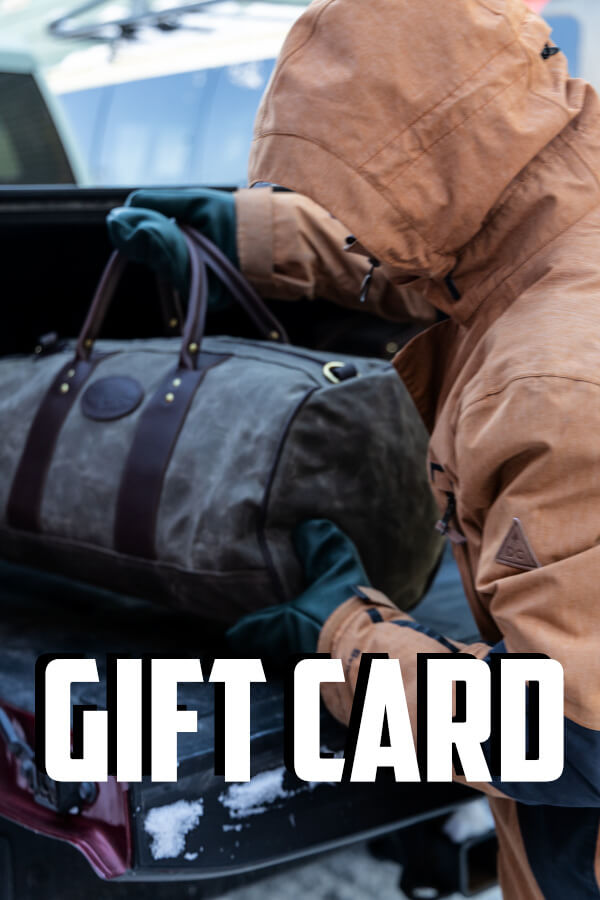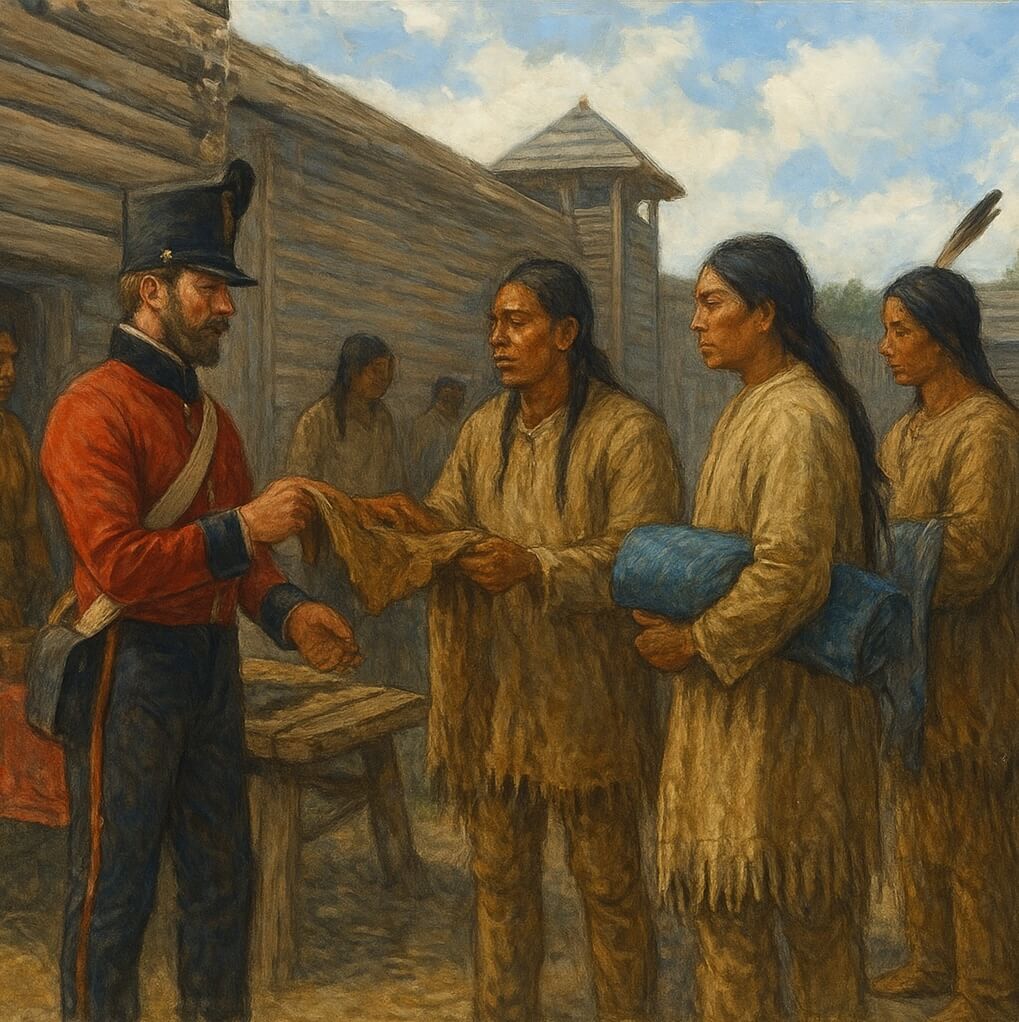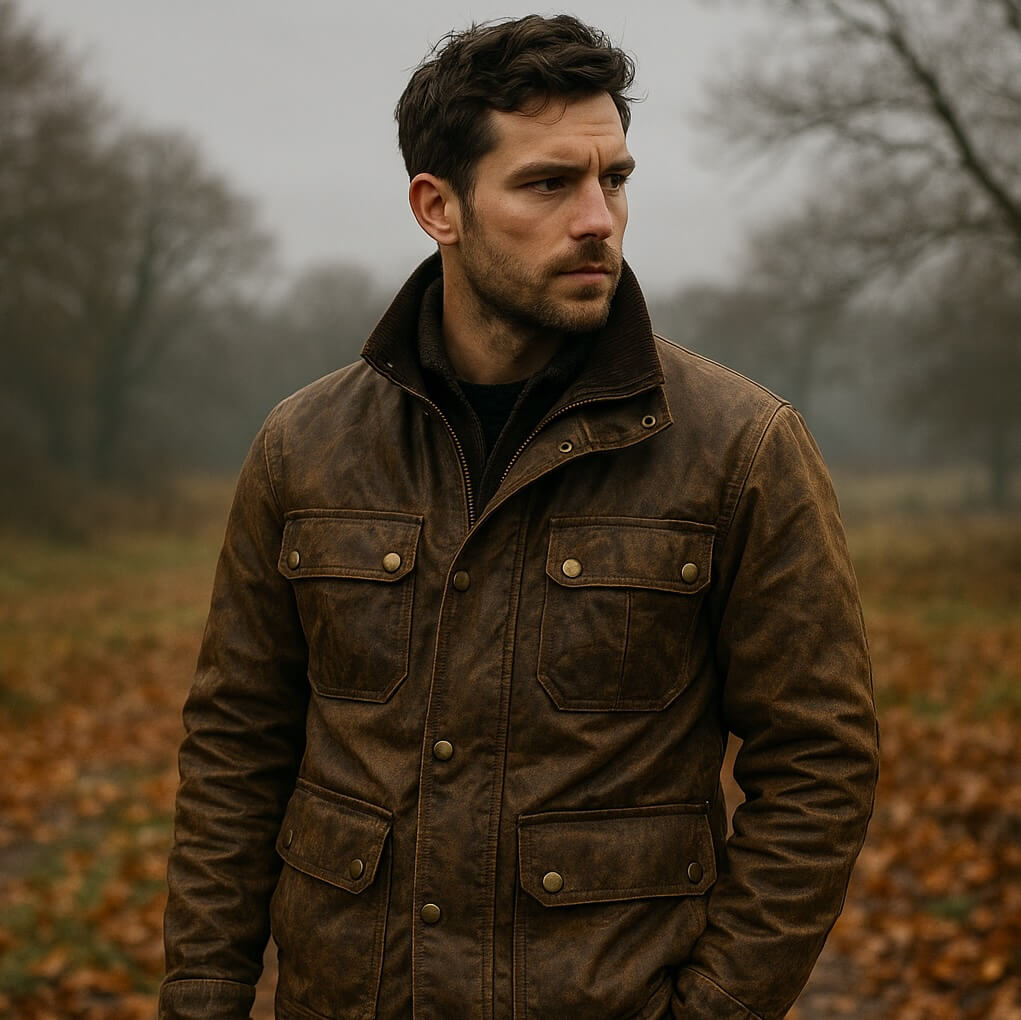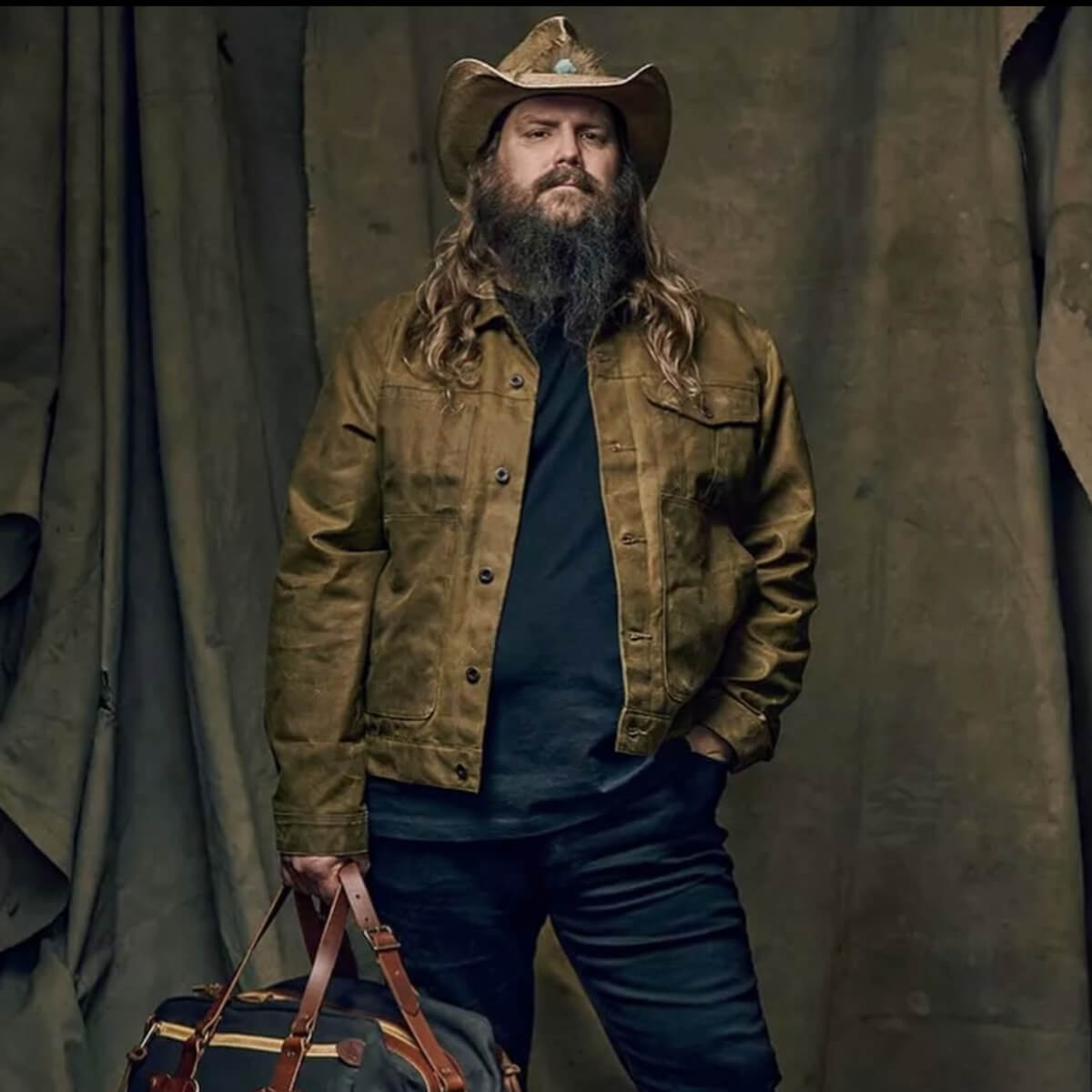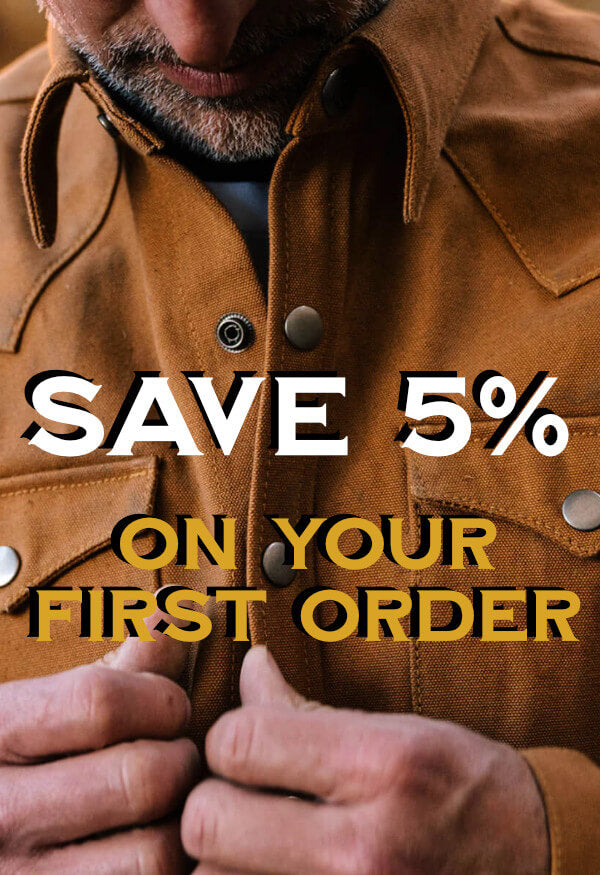The Mackinaw jackettraces its roots to coats that were made by white and Métis women in November 1811, when John Askin Jr., an early trader on the upper Great Lakes, hired them to design and sew 40 woolen greatcoats for the British Army post at Fort St, Joseph (Ontario), near Mackinac. His wife, Madelaine Askin, took an important role in the design of the coat. Askin was fulfilling a contract he received from Capt. Charles Roberts, the post commander; Roberts was desperate to clothe his men, who had last been issued greatcoats in 1807.The jackets were made from three-point trade blankets that Askin, who at the time was keeper of the King's store at the fort, supplied on the captain's authority. Although the order called for blue coats, the number of blue blankets proved insufficient, so the number was filled out by coats made from blankets in red as well as the black-on-red tartan pattern that is associated with the jackets of today. The long skirts of the greatcoat were unsuitable for deep snow, and once these were removed, the Mackinaw jacket was born.
From workwear to sportswear
In the days of the Old West, heavyweight Buffalo Plaid Mackinaw Wool Coats were worn with knit caps by American and Canadian lumberjacks in the Midwest, Northwest Territories and Alaska. By the 1930's, the jacket had also found widespread use among hunters and fishermen, together with a knit cap. A variant of the Mackinaw in olive drab was issued to the US Army for cold weather use by Jeep crews.
Over the years, the Mackinaw Wool Coat has been adopted by various cultural movements but its use as a hard working and reliable coat to withstand the elements has endured. It is over 200 years since the Mackinaw coat came in to being, it continues to be regarded as the height of cold weather performance (and it looks really good too!).
You can see our Mackinaw Jackets here
Available in three colours: Buffalo Plaid, Olive and Charcoal
(Source: Wikipedia)

